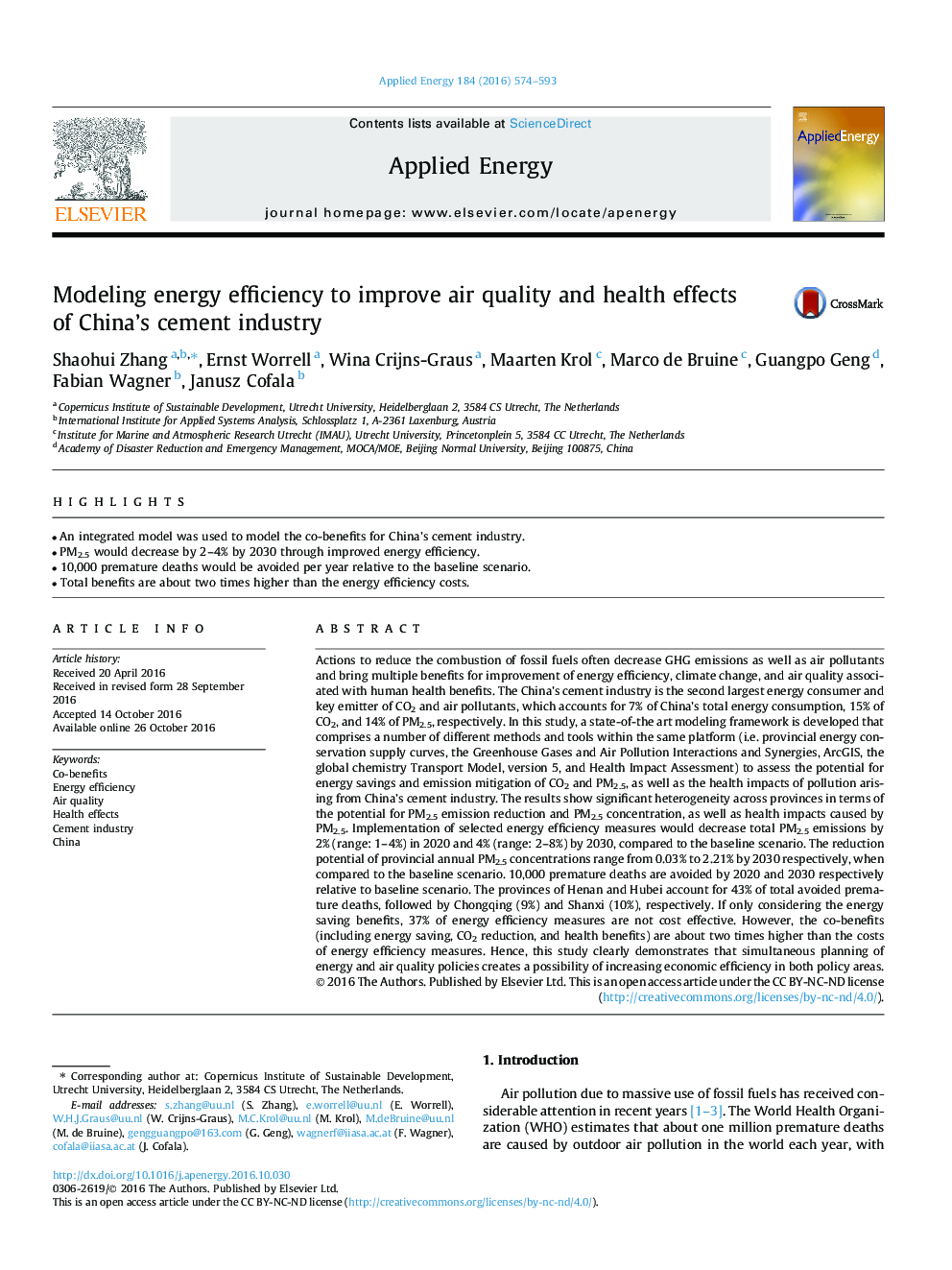| Article ID | Journal | Published Year | Pages | File Type |
|---|---|---|---|---|
| 4916893 | Applied Energy | 2016 | 20 Pages |
â¢An integrated model was used to model the co-benefits for China's cement industry.â¢PM2.5 would decrease by 2-4% by 2030 through improved energy efficiency.â¢10,000 premature deaths would be avoided per year relative to the baseline scenario.â¢Total benefits are about two times higher than the energy efficiency costs.
Actions to reduce the combustion of fossil fuels often decrease GHG emissions as well as air pollutants and bring multiple benefits for improvement of energy efficiency, climate change, and air quality associated with human health benefits. The China's cement industry is the second largest energy consumer and key emitter of CO2 and air pollutants, which accounts for 7% of China's total energy consumption, 15% of CO2, and 14% of PM2.5, respectively. In this study, a state-of-the art modeling framework is developed that comprises a number of different methods and tools within the same platform (i.e. provincial energy conservation supply curves, the Greenhouse Gases and Air Pollution Interactions and Synergies, ArcGIS, the global chemistry Transport Model, version 5, and Health Impact Assessment) to assess the potential for energy savings and emission mitigation of CO2 and PM2.5, as well as the health impacts of pollution arising from China's cement industry. The results show significant heterogeneity across provinces in terms of the potential for PM2.5 emission reduction and PM2.5 concentration, as well as health impacts caused by PM2.5. Implementation of selected energy efficiency measures would decrease total PM2.5 emissions by 2% (range: 1-4%) in 2020 and 4% (range: 2-8%) by 2030, compared to the baseline scenario. The reduction potential of provincial annual PM2.5 concentrations range from 0.03% to 2.21% by 2030 respectively, when compared to the baseline scenario. 10,000 premature deaths are avoided by 2020 and 2030 respectively relative to baseline scenario. The provinces of Henan and Hubei account for 43% of total avoided premature deaths, followed by Chongqing (9%) and Shanxi (10%), respectively. If only considering the energy saving benefits, 37% of energy efficiency measures are not cost effective. However, the co-benefits (including energy saving, CO2 reduction, and health benefits) are about two times higher than the costs of energy efficiency measures. Hence, this study clearly demonstrates that simultaneous planning of energy and air quality policies creates a possibility of increasing economic efficiency in both policy areas.
